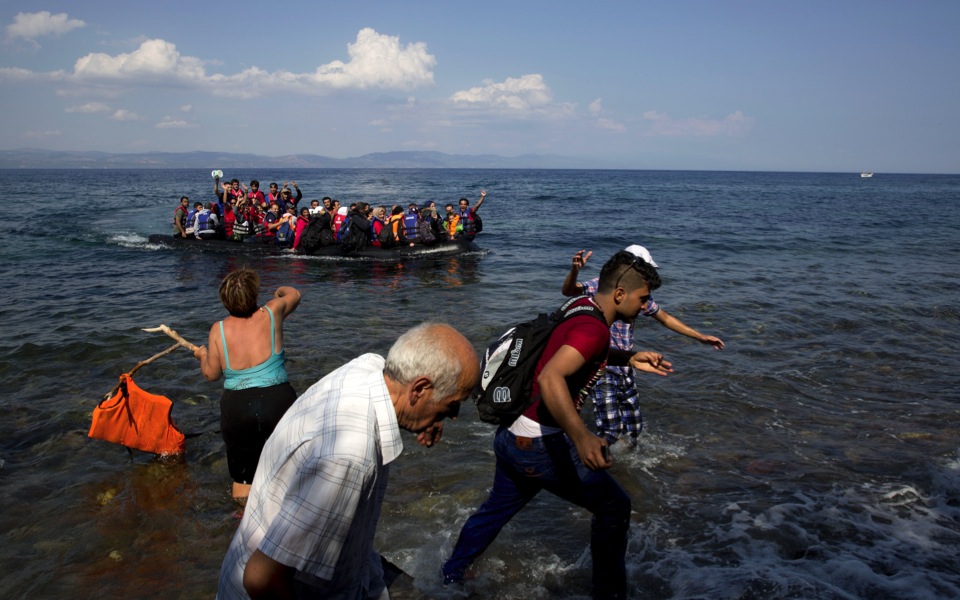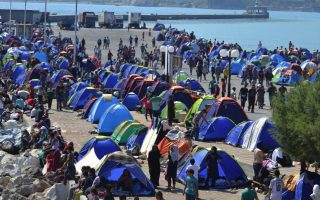EU’s refugee plan: how does it work?

European Commission chief Jean-Claude Juncker will unveil a plan Wednesday for EU states to take 120,000 refugees from overstretched Italy, Greece and Hungary, but divisions remain over how it would work.
The proposals, to be announced in the European Parliament, are aimed at relieving the worst refugee crisis since World War II as growing numbers of people flee war-torn Syria and other conflict zones for Europe. Here are the basics:
Under Juncker's plan for emergency relocation to deal with an escalating crisis, Germany, France and Spain would together relocate nearly 60 percent of 120,000 refugees currently in Italy, Greece and Hungary, under mandatory quotas.
Germany would take 31,443 refugees (26.2 percent), France would take 24,031 (20 percent) and Spain 14,931 (12.4 percent over the next two years.
The next biggest intakes would be Poland, the Netherlands, Romania, Belgium and Sweden.
Member states that refuse the quotas are expected to be asked to offer financial compensation instead.
The quotas are worked out by a distribution key according to the country's GDP (40 percent), population (40 percent), unemployment rate (10 percent) and already-processed asylum applications.
Britain, Ireland and Denmark are not required under EU treaties to participate in the plan.
The plan comes on top of a Juncker proposal in May for quotas for the relocation of nearly 40,000 mainly Syrian and Eritrean refugees from Italy and Greece.
EU leaders failed to agree on quotas at a summit in June and instead said they would take just 32,000, with many European governments fearing a populist or anti-immigrant backlash at home.
EU Home Affairs ministers will discuss both the 120,000 and the 40,000 plans on September 14 in Brussels.
Brussels draws a distinction between the “relocation” and “resettlement” of refugees.
“Relocation” is from one EU country where they have already landed to another EU state, and is what the Juncker plan concerns; while “resettlement” is from from camps outside the EU, for example in countries bordering Syria.
Relocated refugees will not be able to choose their destination and will have to remain in the country they are assigned to, instead of being able to move around Europe to live and work as EU citizens can.
Countries will receive 6,000 euros in EU aid per person, according to the commission plan.
These one-time relocations amount to exceptions to European rules in the name of “solidarity” among EU states as the Dublin regulation stipulates that refugees must normally stay in the country where they first arrive.
In terms of “resettlement”, EU states agreed in July to resettle 22,504 Syrian refugees currently living in camps outside the bloc, exceeding their target of 20,000.
British Prime Minister David Cameron said Monday that his country was ready to resettle 20,000 Syrian refugees living in camps in Turkey, Lebanon and Jordan over the next five years.
The European Commission wants to avoid having to come up with new relocation figures each time there is a surge in refugee arrivals, because negotiations with member states have been so bitter and drawn out.
Instead, it hopes member states will agree to a system of quotas based on criteria that will allow member states to immediately determine how many each will take in.
There may still be strong resistance among some member states to a binding and permanent quota system.
However, there is new pressure for systematic and coordinated action to tackle the refugee crisis, particularly after the widely-distributed photograph of a Syrian toddler lying lifeless in the surf of a Turkish beach.
France, which had been hostile to permanent quotas, now supports Germany over the need for the permanent and mandatory reception of refugees to share the burden among all European countries.
[AFP]





